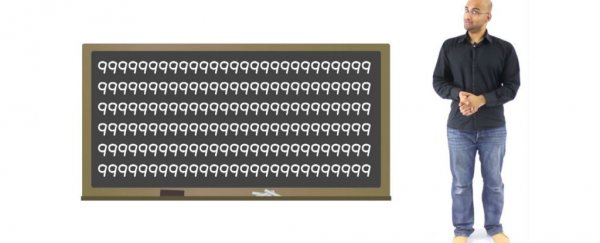
Alright guys, we're about to crunch some serious numbers, so I hope you're ready. Sharkee on YouTube is going to help us figure out what the biggest number is, but he's got some conditions so things don't get too crazy. First off, the number must be useful in some way, and secondly, it can't just be an arbitrary number - you have to show how you got it. Thirdly, no, you can't just say, "A number plus one," because that's cheating. Oh yeah, and infinity doesn't count - the number must be finite.
Okay, now that we've got the rules out of the way, here we go. First up, we need to break one of those rules and pick an arbitrary number - if only to see if our non-arbitrary numbers are larger or smaller than it. We're starting off with the very impressive googol, which is 10100 (or if you're writing the actual number out, it's 1, followed by 100 zeros).
To illustrate how enormous a googol is, the video above explains that it's actually larger than the number of atoms in your body. Your mind isn't boggled yet? Okay then, a googol is larger than all the atoms ON EARTH. Still not cool enough? How about the fact that a googol is more than the all the atoms that make up the observable Universe (which is about 1080). Yep, a googol is really freaking big.
So what number is bigger than a googol, but is still useful in mathematics? To figure that out, Sharkee gets the help of a hypothetical Rubik's Cube with 1.95 x 10160 sides, which is definitely bigger than a googol.
But can we find a number that's bigger than a googolplex, which is 10 to the power of a googol, so 10 to the power of 10100? As the video explains, the number of different possible universes is smaller than a googolplex, but if we discount the limitation that we have to be about to observe these universes, then we can beat the googolplex.
If you thought a googolplex was big, how about a googolplexian - 10 to the power of a googolplex. Yep, Sharkee goes there, and while these numbers are near-impossible to wrap your head around, it's weirdly addictive stuff.
Watch the video above to find out what the "biggest, largest, meanest, and most terrifying number ever to be conceived" actually is, and then send out good thoughts to all those mathematians and philosophers out there whose job it is to know what that actually means. They're the real heroes.
H/T: Scientific American
